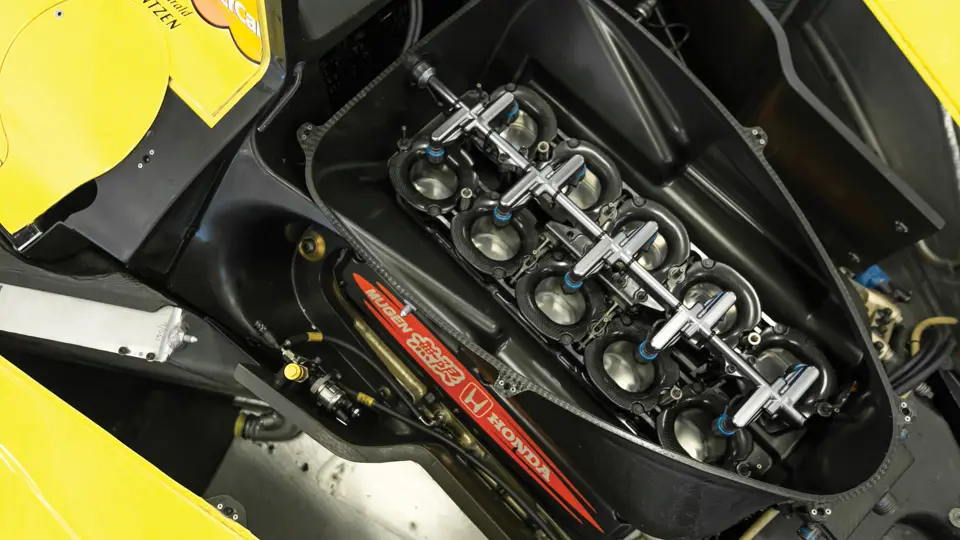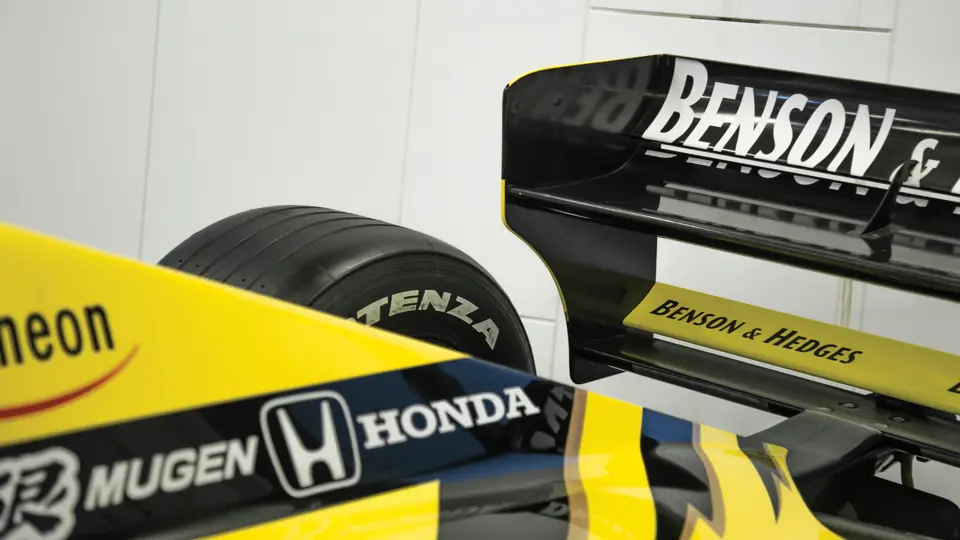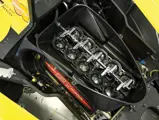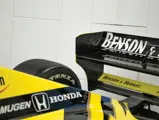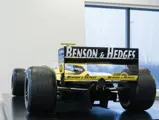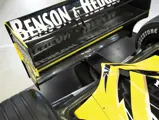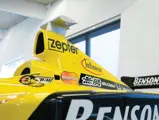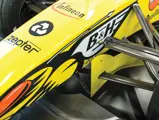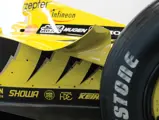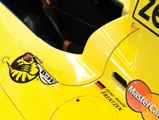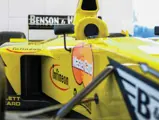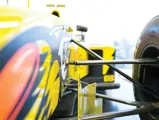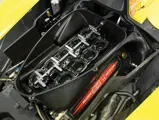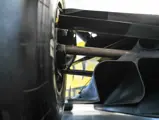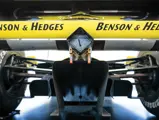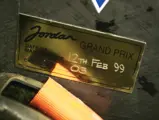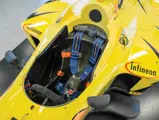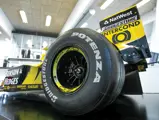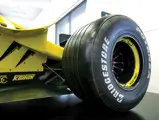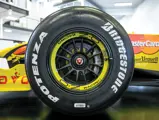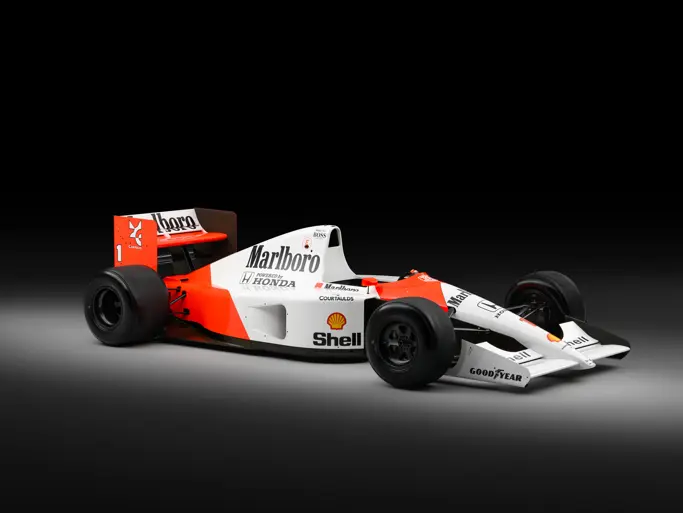
1999 Jordan 199 Formula 1
{{lr.item.text}}
€241,250 EUR | Sold
{{bidding.lot.reserveStatusFormatted}}
- 2nd at the Australian GP, and 3rd at Brazil in 1999 with Heinz-Harald Frentzen
- Instrumental in achieving 3rd place for both Frentzen and Jordan in the 1999 World Drivers’ and Constructors’ Championships
- Substantially complete, with original specification Mugen-Honda engine
- Ideal for use in BOSS GP series
- Deuxième au Grand Prix d'Australie 1999 et troisième au Brésil avec Heinz-Harald Frentzen
- A contribué à obtenir la troisième place de Frentzen et de Jordan au Championnat du Monde des Conducteurs et des Constructeurs 1999
- Pratiquement complète, avec un moteur Mugen-Honda aux spécifications d'origine
- Idéale pour participer aux séries BOSS GP
Having enjoyed a respectable racing career as a driver – encompassing Formula Ford, Three and Atlantic, as well as Le Mans and a McLaren testing role – Eddie Jordan concentrated his efforts on his eponymous racing team from 1979 onwards. Focusing initially on Formula Three and subsequently Formula 3000, the Dubliner’s formidable talent spotting and management skills would ultimately benefit names including Michael Schumacher, Damon Hill, Jean Alesi, Rubens Barrichello and Johnny Herbert.
Entering Formula 1 in 1991 with their svelte 191, Jordan Grand Prix rapidly assumed the role of plucky overachiever, securing a highly respectable 5th place in the Constructors’ Championship in its first year. In their sophomore season, the team was handed a reality check – scoring but a single point all year – but by the mid-1990s their form had returned, with the team finishing no lower than 6th in the Constructors’ standings in nine consecutive seasons between 1994 and 2002.
Having signed a lucrative sponsorship deal with Gallaher Tobacco for 1996, the team was re-branded Benson & Hedges Jordan-Peugeot, this being abbreviated to Benson & Hedges Jordan with the switch to customer Mugen-Honda power units in 1998. Damon Hill was signed to partner Ralf Schumacher that year, with the former taking a well-deserved maiden victory for the team in a chaotic Belgian Grand Prix.
Hill was joined by Heinz-Harald Frentzen for 1999, and whilst the former World Champion endured a lacklustre season, Frentzen enjoyed a stellar year, with two wins and five other podium places securing him a remarkable 3rd place in the Drivers’ Championship. The team also took 3rd in the Constructors’ standings, making for Jordan’s best-ever season. Although tellingly, some 54 of the 61 points were scored by Frentzen.
This chassis – 003 – was used by Frentzen in the first Grand Prix of the year in Australia, where he finished an excellent 2nd to Eddie Irvine’s Ferrari after the front row-starting McLarens of Mika Hakkinen and David Coulthard had retired. At the second race, at Interlagos, Frentzen produced a fine drive to take 3rd behind Hakkinen and Michael Schumacher’s Ferrari. Thereafter, the chassis was relegated to spare car duties, and it is understood that it was not raced again.
A highly significant car – which played a significant role in Jordan’s most successful Grand Prix season – 003 remains substantially complete, with the exception of its gearbox internals and exhaust manifolds, original steering wheel and steering box. Prospective bidders should contact an RM Sotheby’s specialist with any questions regarding exact component details.
BOSS Formula has in recent years emerged as the natural home for 1990s and 2000s Grand Prix cars, offering their fortunate owners the chance to sample their phenomenal performance at a fraction of the original development costs, and 003 would doubtless be a very welcome addition in this respect.
Après avoir connu une respectable carrière de pilote automobile (avec des participations en Formule Ford, Formule 3 et Formule Atlantic, aux 24 Heures du Mans et avec un rôle de pilote d'essai pour McLaren), Eddie Jordan a concentré ses efforts à partir de 1979 sur son écurie de course éponyme. L'Irlandais s'est d'abord intéressé à la Formule 3 puis à la Formule 3000, et son formidable talent pour découvrir les meilleurs pilotes et les faire progresser ont profité à des noms tels que Michael Schumacher, Damon Hill, Jean Alesi, Rubens Barrichello et Johnny Herbert.
Faisant ses premiers pas en Formule 1 en 1991 avec sa fine monoplace 191, Jordan Grand Prix endossait l'habit de perfectionniste courageux, décrochant pour cette première saison une très enviable cinquième place au Championnat du Monde des Constructeurs. La deuxième année ramenait l'équipe à la réalité et elle ne signait qu'un seul point pendant toute la saison mais, au milieu de l'année 1990, la forme revenait. Ainsi, pendant les neuf saisons consécutives de 1994 à 2002, le moins bon résultat obtenu par l'équipe au Championnat du Monde des Constructeurs était la sixième place.
En 1996, ayant signé un lucratif contrat de sponsoring avec Gallaher Tobacco, l'écurie prenait le nom de Benson & Hedges Jordan-Peugeot, appellation réduite à Benson & Hedges Jordan avec le passage en 1998 au moteur Mugen-Honda. Engagé cette année-là aux côtés de Ralf Schumacher, Damon Hill remportait pour l'équipe une victoire bien méritée lors de sa première course, un Grand Prix de Belgique très chaotique.
Hill était rejoint pour la saison 1999 par Heinz-Harald Frentzen et, alors que l'ancien Champion du Monde connaissait une saison terne, Frentzen bénéficiait d'une année magnifique : avec deux victoires plus cinq podiums, il obtenait une remarquable troisième place au Championnat du Monde des Conducteurs. L'équipe décrochait aussi la troisième place au classement Constructeurs, le meilleur résultat jamais obtenu par l'équipe Jordan en Formule 1. En fait, 54 des 61 points de l'équipe étaient signés Frentzen.
Ce châssis n°003 a été utilisé par Frentzen lors du premier Grand Prix de l'année en Australie. Le pilote a terminé à une excellente deuxième place derrière la Ferrari d'Eddie Irvine, après l'abandon des deux McLaren de Mika Hakkinen et David Coulthard, qui occupaient la première ligne. A Interlagos, deuxième course de la saison, Frentzen effectuait une belle démonstration de pilotage et remportait la troisième place derrière Hakkinen et la Ferrari de Michael Schumacher. La voiture était ensuite reléguée au rôle de machine de réserve, et n'a semble-t-il jamais couru à nouveau.
Voiture extrêmement significative, cette monoplace n°003 a joué un rôle important pour permettre à Jordan de signer sa meilleure saison. Elle est pratiquement complète, et il ne lui manque que les pièces internes de la boîte de vitesses, les collecteurs d'échappement, le volant et le boîtier de direction d'origine. Les acheteurs intéressés sont invités à contacter un spécialiste de RM Sotheby's pour toute question concernant le détail exact des composants.
BOSS GP s'est récemment développé pour accueillir les voitures de Grand Prix des années 1990 et 2000, offrant aux heureux propriétaires l'occasion d'expérimenter les performances fabuleuses de ces voitures pour une fraction des coûts originaux de développement. Cette Jordan 003 y sera sans aucun doute une compétitrice bienvenue, à tous points de vue.





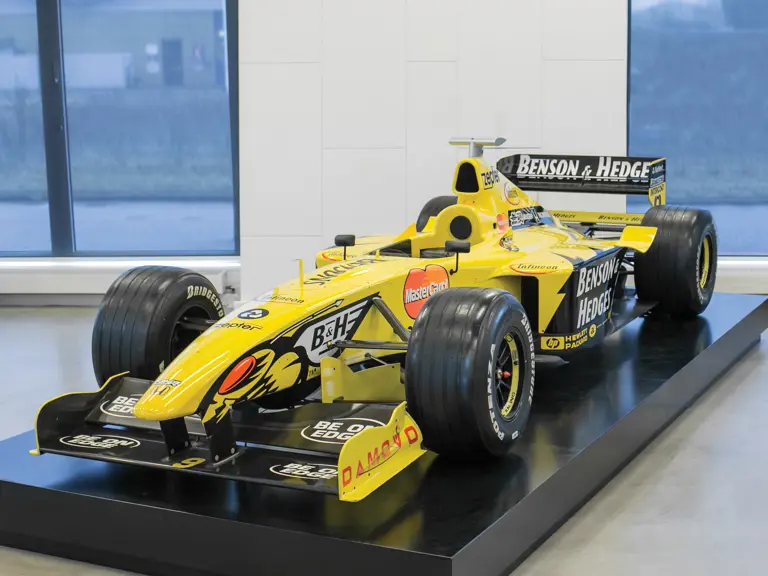
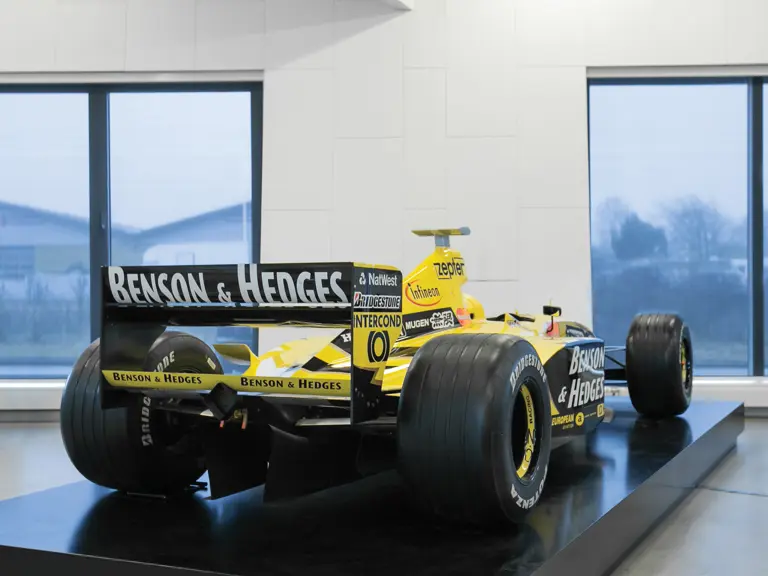
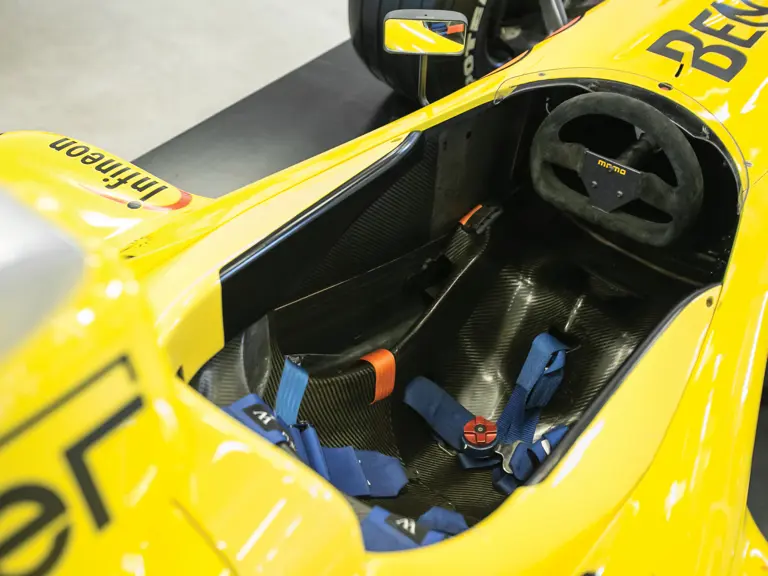
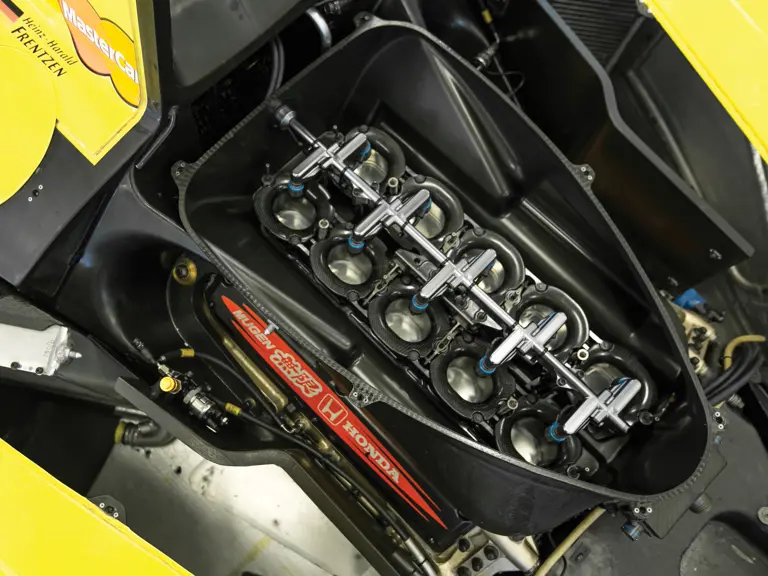
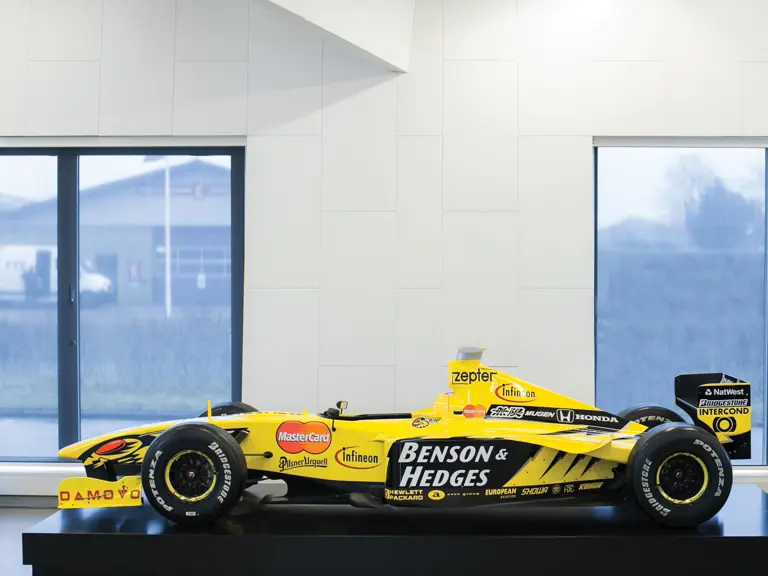
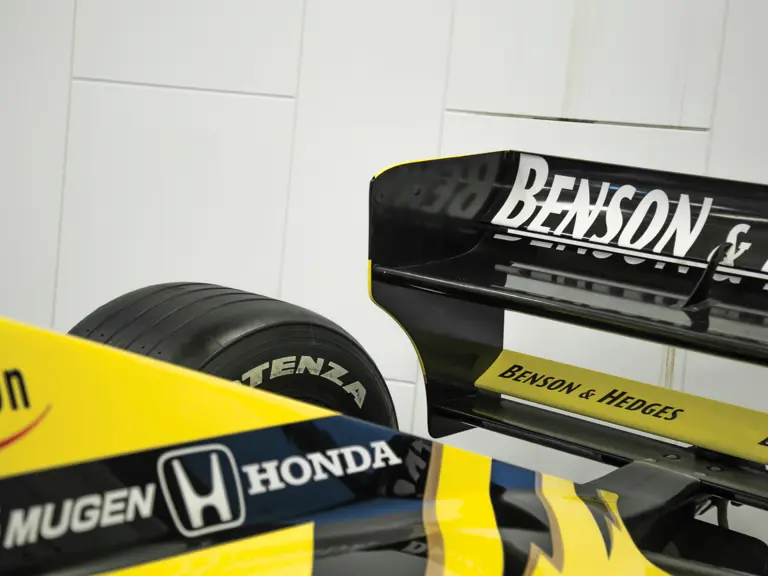

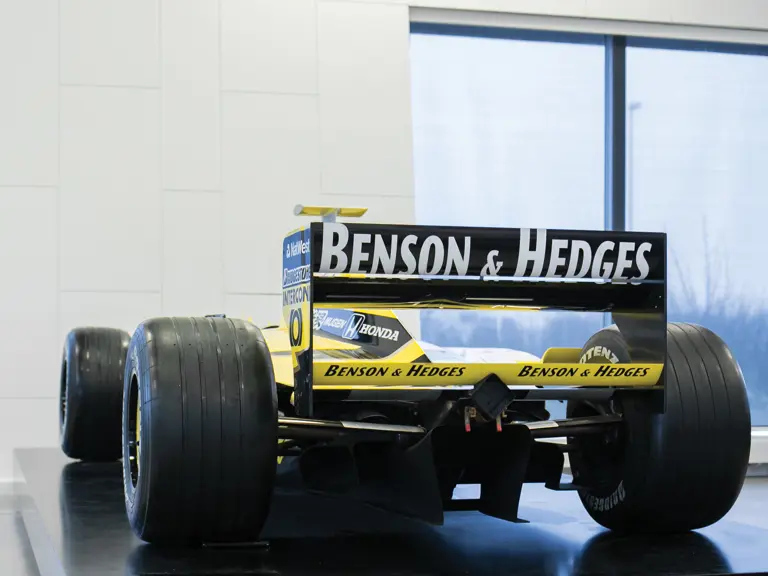
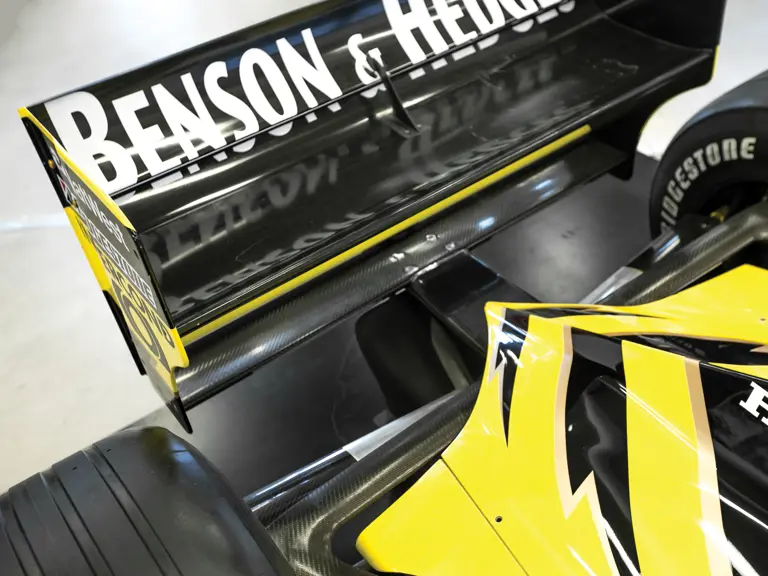
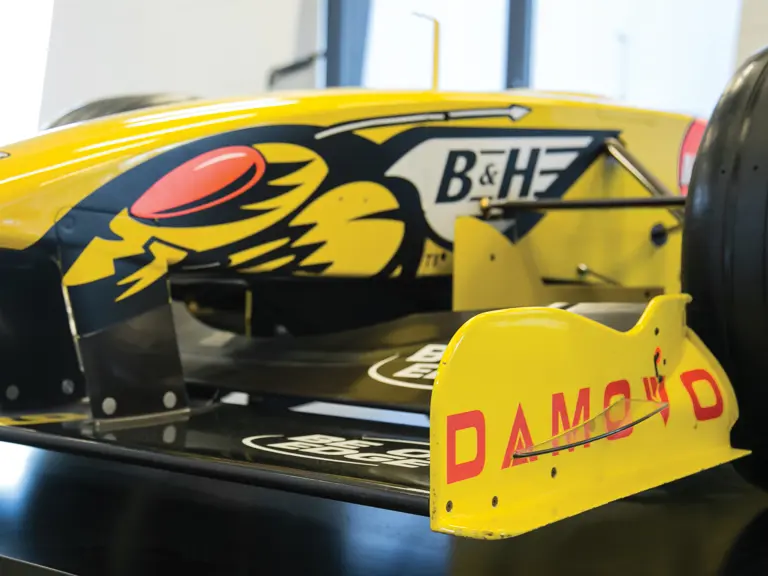
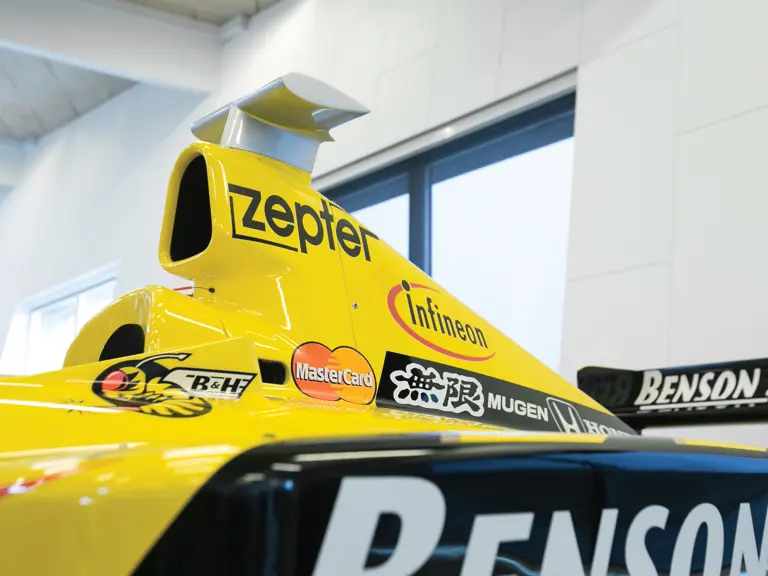
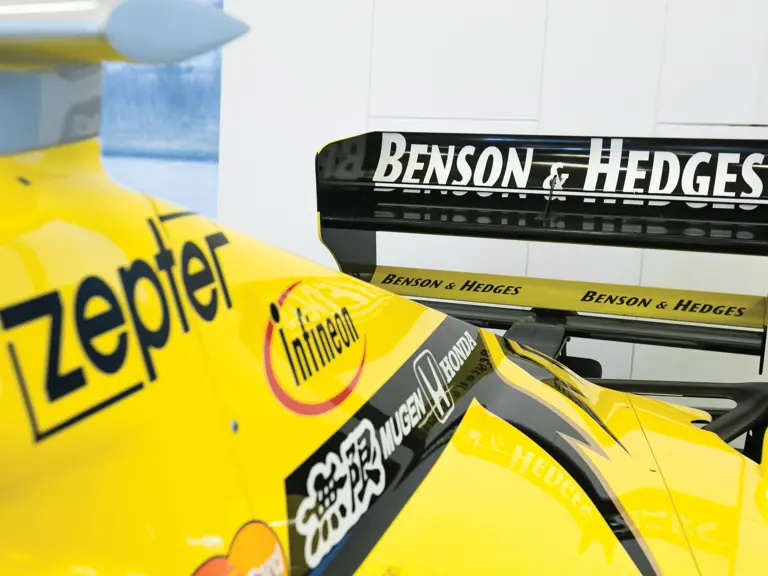
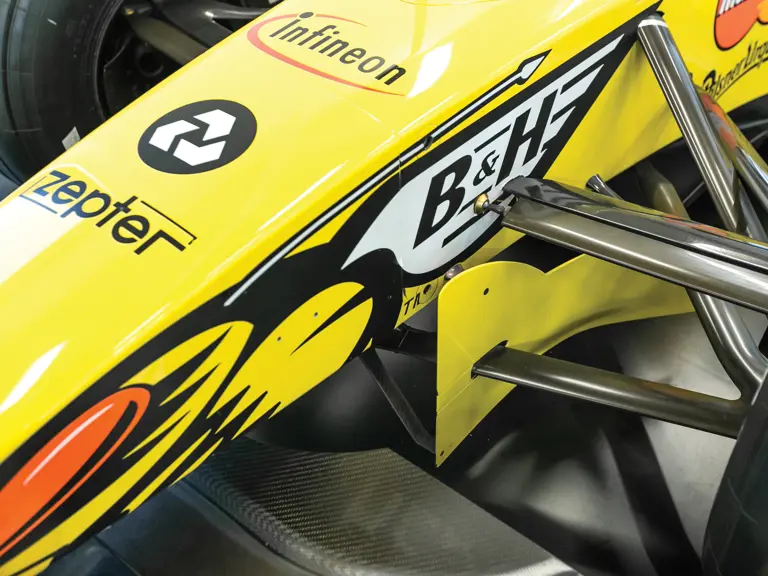
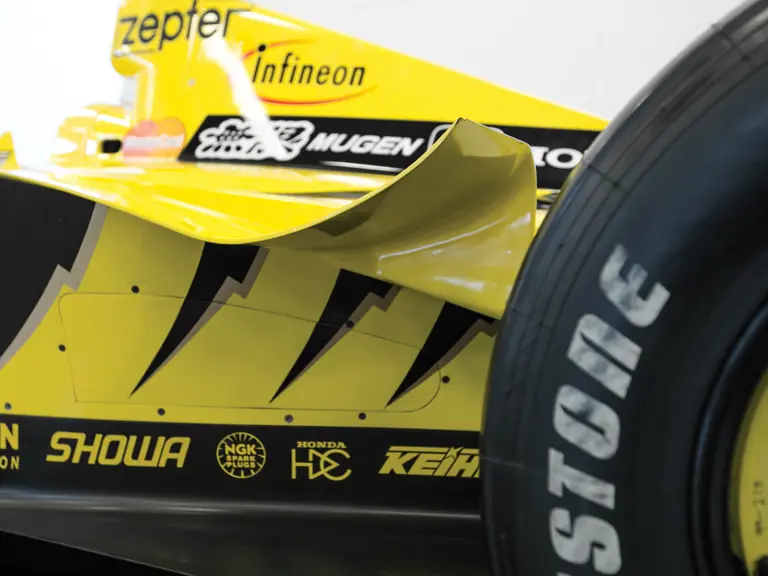
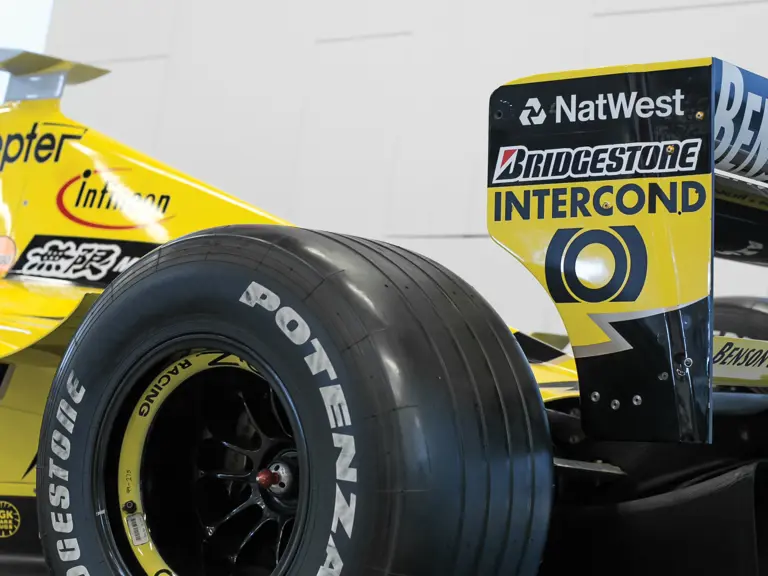


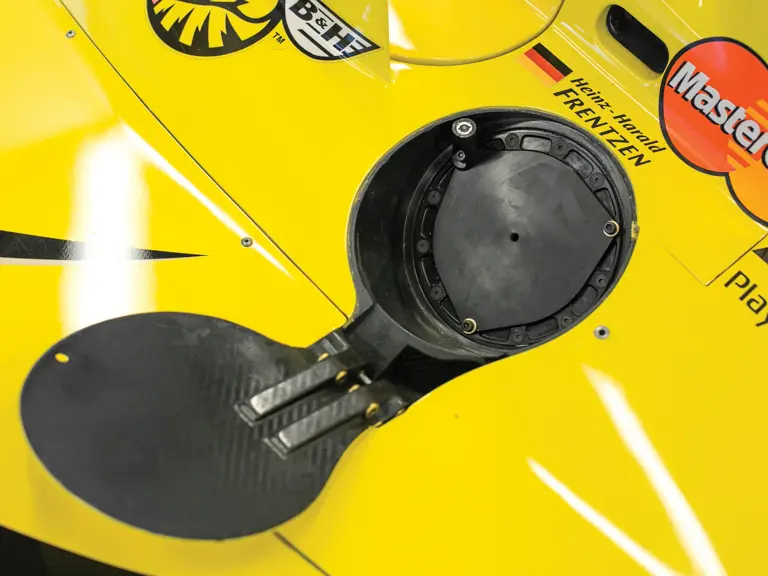

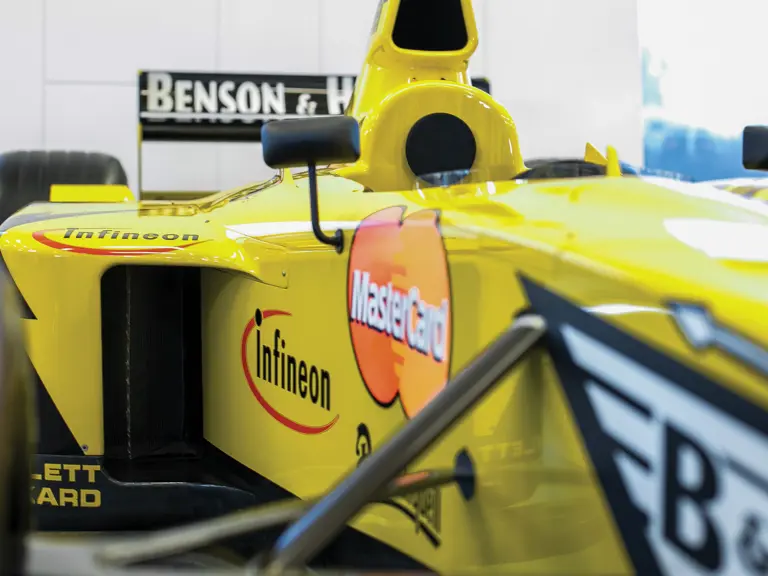
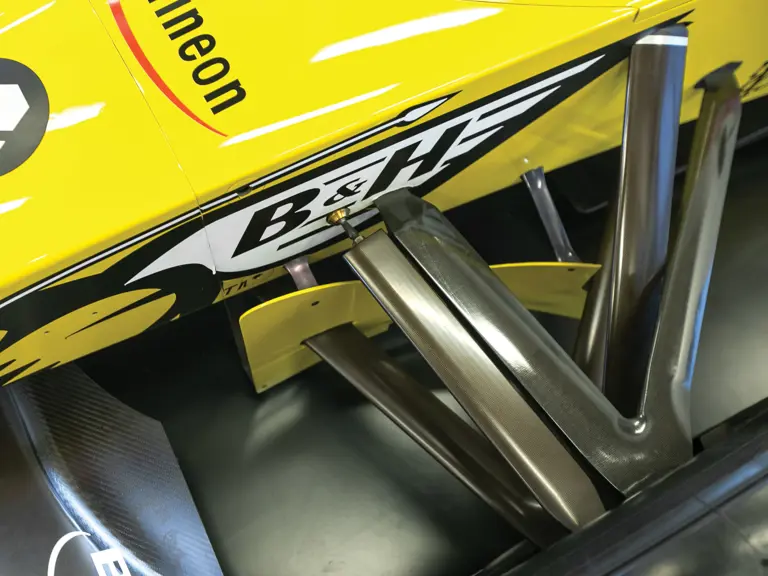
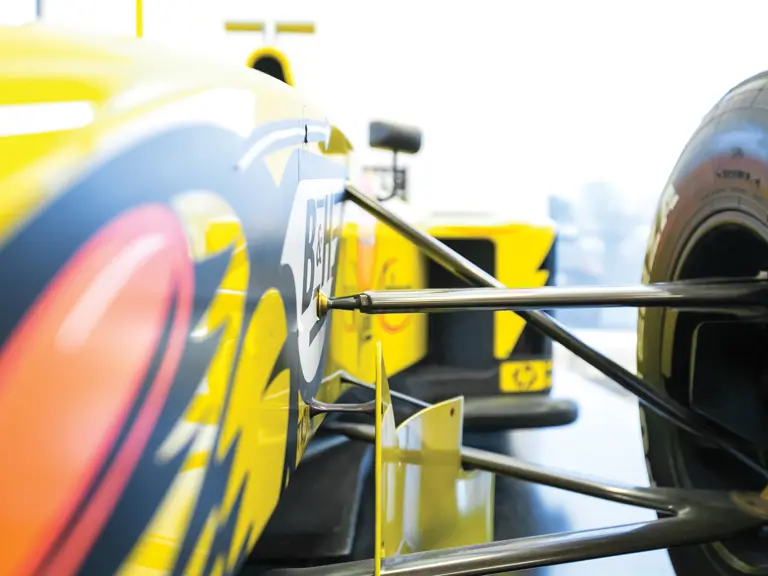
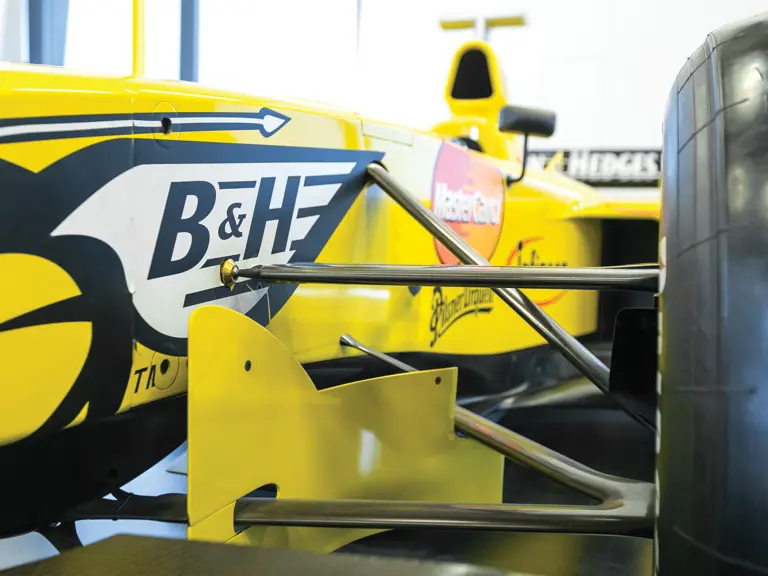
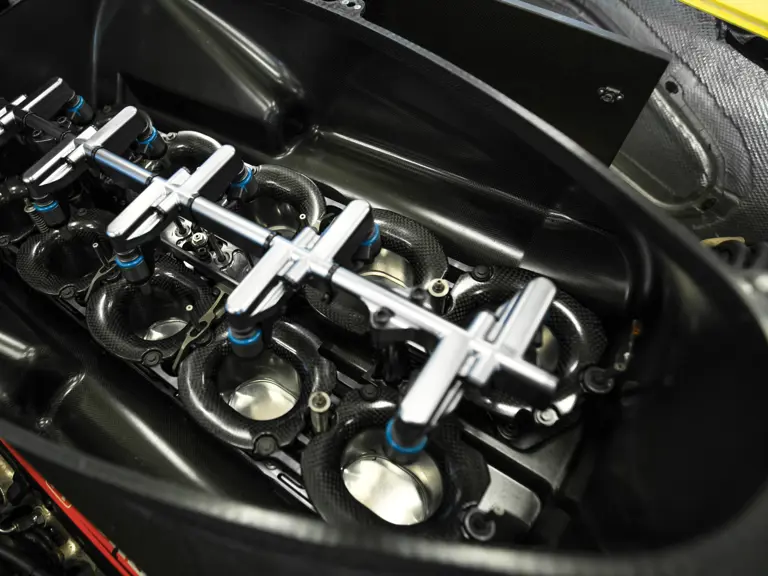

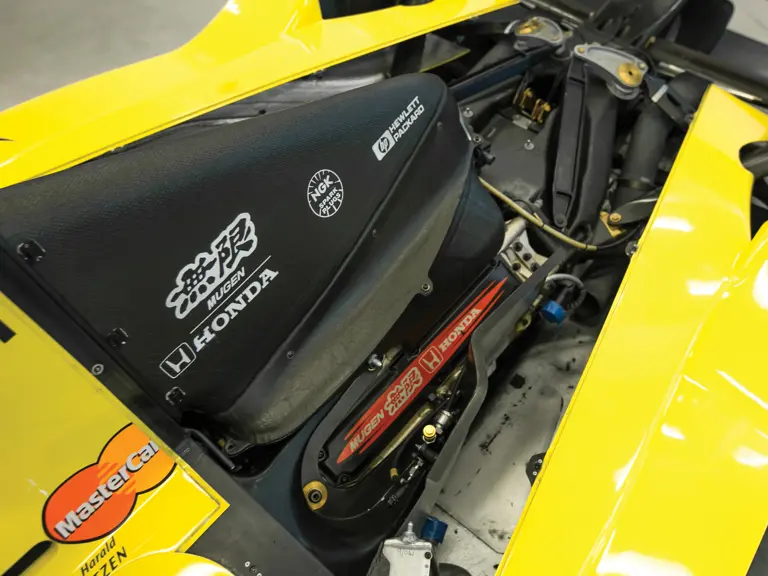

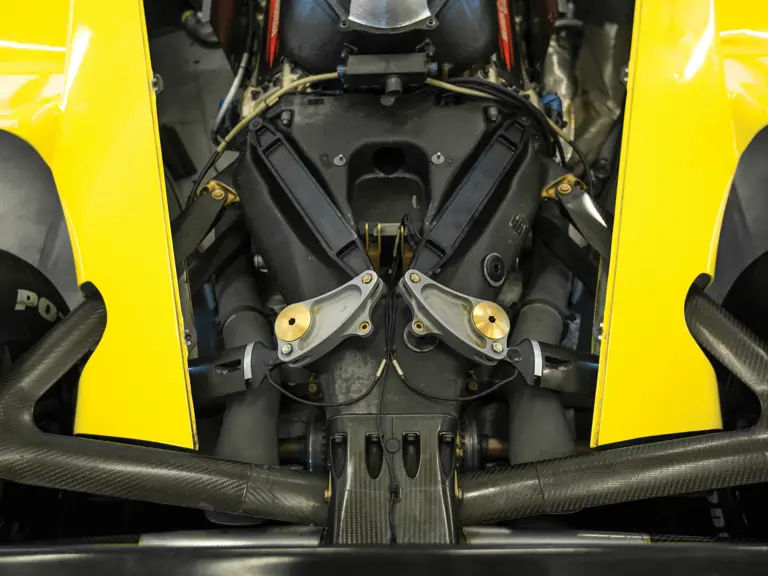
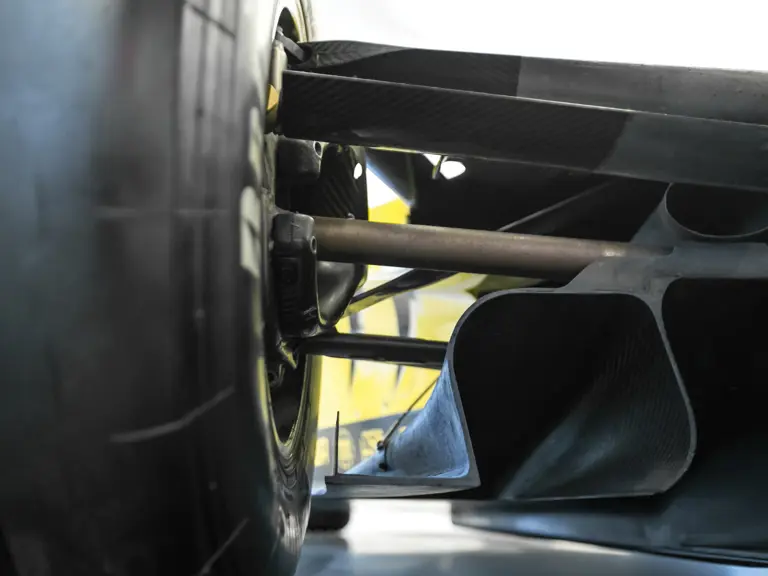
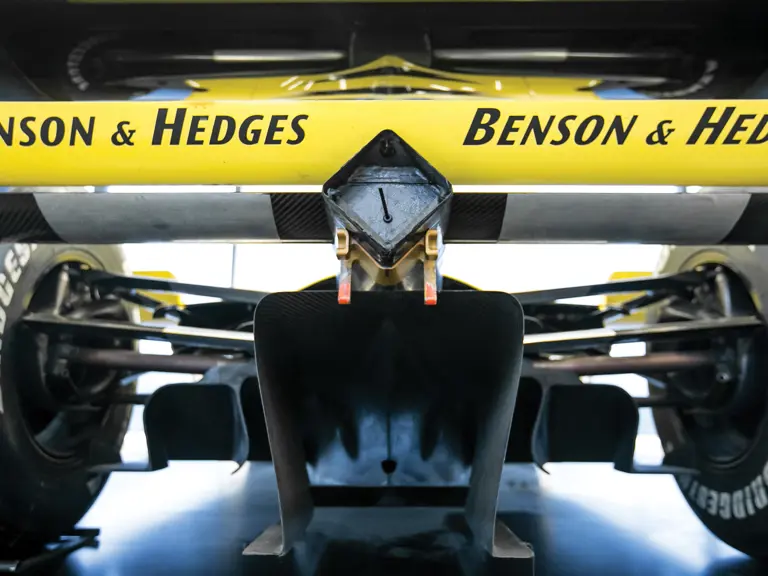


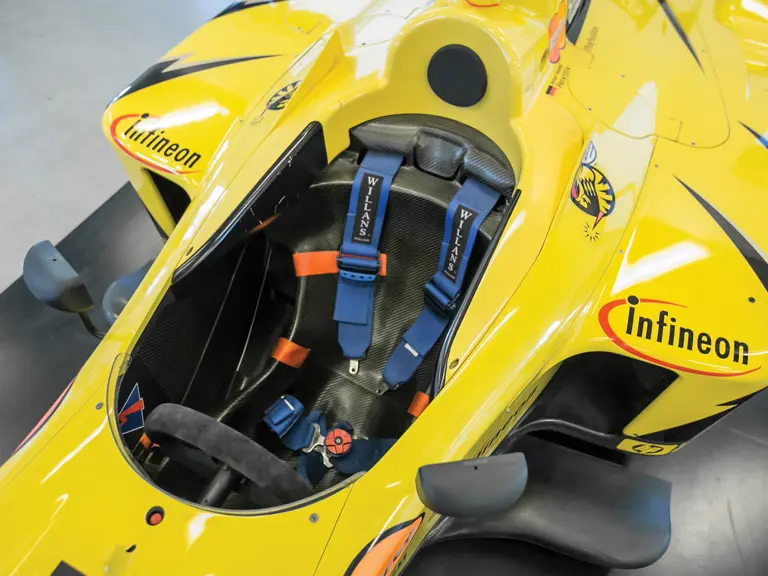

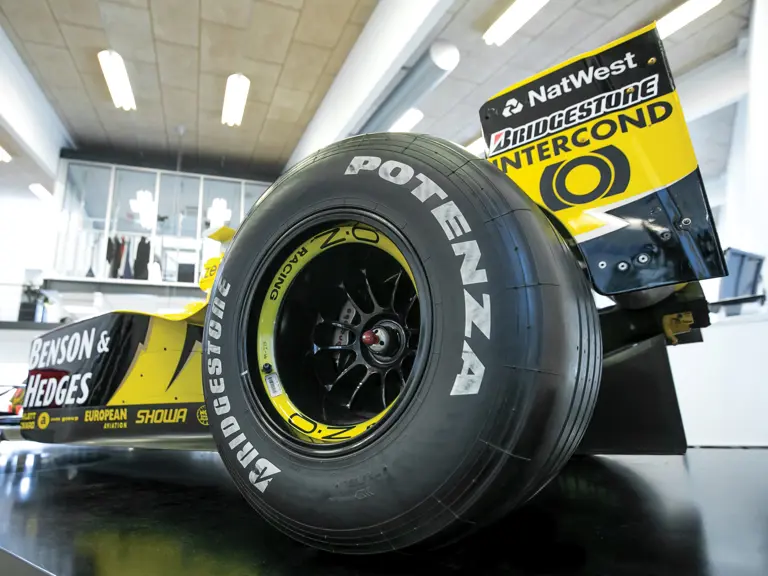

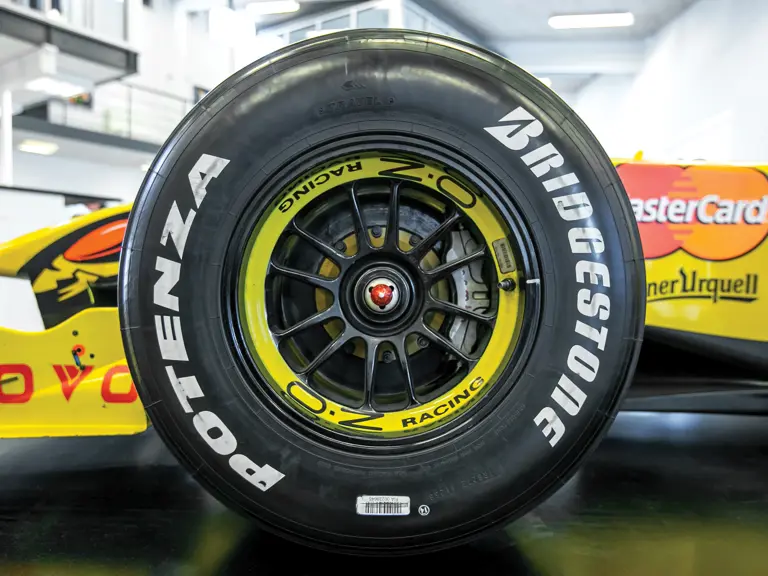
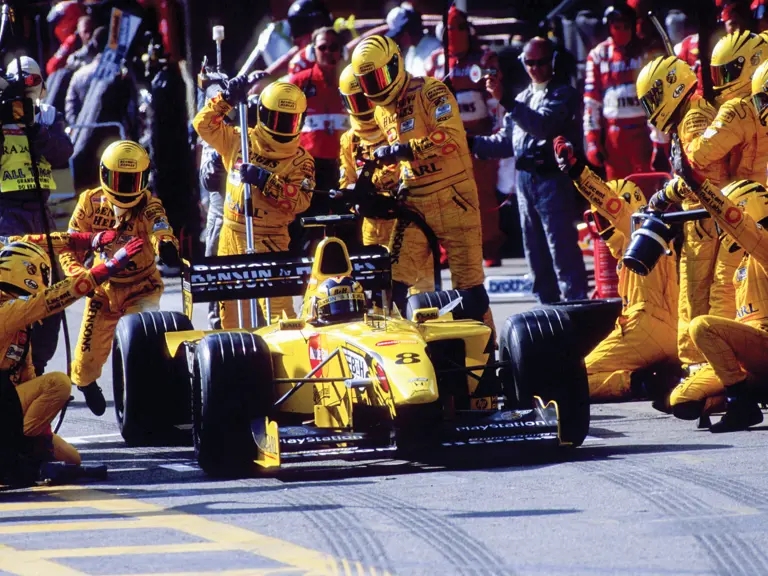
 | Monte Carlo, Monaco
| Monte Carlo, Monaco
